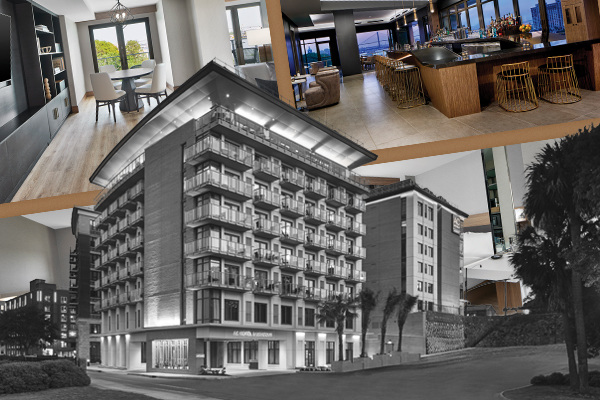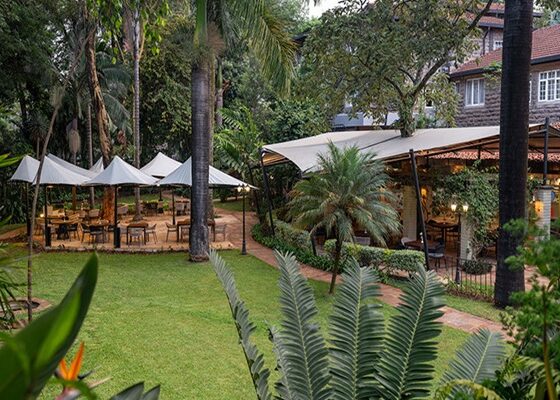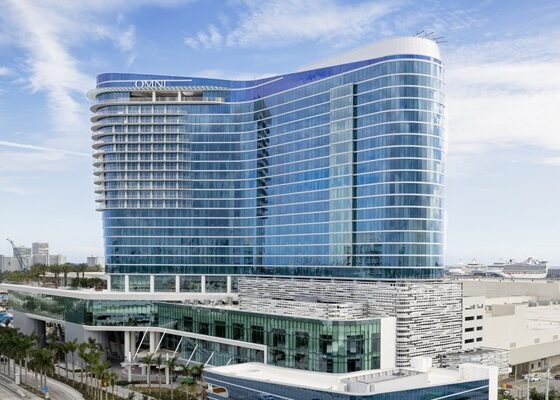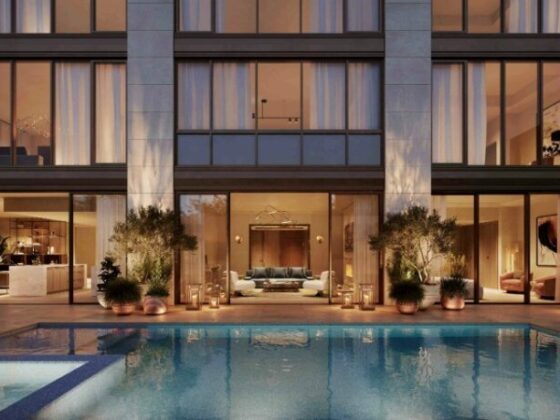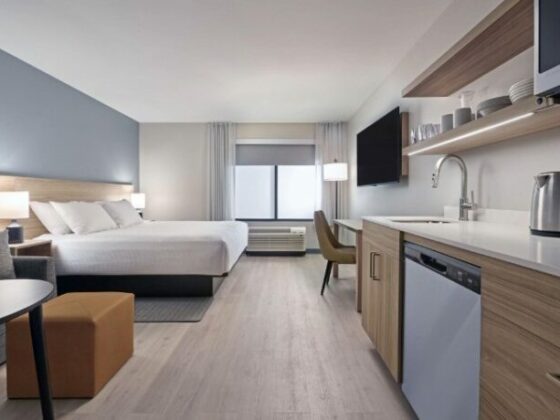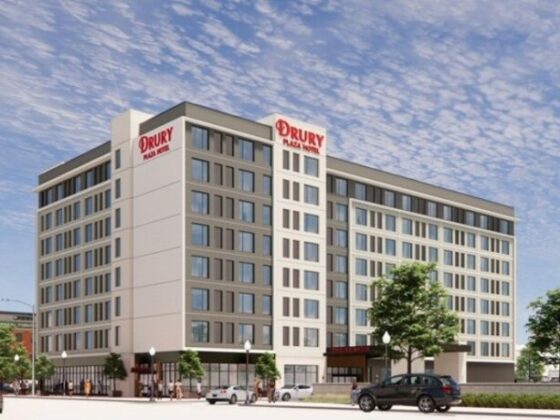Savannah, Ga., is a place that tolerates change with a wary eye. The nearly 300-year-old city prides itself on evolving at its own pace, free to preserve its culture and character as a way of life.
It’s why there was some trepidation when it was announced that a piece of old Savannah would be demolished for a new hotel. But the AC Hotel Savannah Historic District, created through a partnership with North Point Hospitality and GMShay Architects, isn’t a throwback—it’s a glimpse of the future.
The hotel was awarded the LEED Platinum certification for new construction, the highest recognition from the U.S. Green Building Council (USGBC) for leadership in energy efficiency and sustainable building practices.
“We’ve worked with North Point for over 20 years, and this one, in many ways, was the pinnacle,” said Pat Shay, president and senior principal of GMShay Architects. “This was a quantum leap, and we’re thankful we were able to achieve LEED certification, which is very difficult to get.”
With beautiful interiors, cost-efficient operations and an innovative outdoor section along the Savannah Riverwalk, AC Hotel Savannah Historic District is a jolt of energy in a place seldom known for it.
“We tend to get trapped by our own rules that you’ve got to build something that is a caricature of some other historic building, so I was very excited to see a more modern building,” said North Point Hospitality COO Whip Triplett. “It’s the architecture of today, not an idea of what the architecture of the past used to be.”

A GREEN DREAM
Shay and Triplett have both lived and worked together in Savannah for decades; they know the area well. GMShay Architects and North Point Hospitality had just completed the first of four scheduled Savannah hotel projects, a Homewood Suites by Hilton, that nearly qualified for LEED certification. For environmentally conscious design firm GMShay, their next project, the AC Hotel Savanah Historic District, was an opportunity to go all the way and achieve the highest level of sustainability possible.
The old Savannah Electric Power Company (SEPCO) building along the waterfront was in an idyllic spot, but its many structural issues made remediation impossible. Thus began a rigorous cooperation with the Savannah Historic District Board of Review (HDBR), first to gain permission to demolish the old building, then to install the requisite sustainability features. GMShay presented it as an opportunity.
“We said, ‘Let’s take the building, which wasn’t very handsome—it’s mid-century modern, but it was designed by guys that designed power plants—and turn it into an advantage,’” said Shay. “Let’s take an environmental problem and come back with something that is as excellent as anything that will ever be done from an environmental standpoint in Savannah. And that logic prevailed.”
With its lofty goal set, design began in 2015. Construction would take nearly a decade, every detail requiring extra attention. Four new water and sewer mains and half a mile of pipeline were installed, requiring an arduous negotiation with the HDBR, but Shay was adamant that the building be energy efficient and conserve water without compromising the shower experience.
It also had to shed water— enough to withstand Savannah’s frequent storms—without compromising air quality. The hotel stays cool with breathable materials, rooftop solar panels and copious windows that reduce electricity costs with natural light, taking extra care to conceal its sustainability tricks to guests.
“To North Point’s credit, every time we hit one of those rough spots, we stuck by the LEED Platinum goal,” said Shay. “At the end of the day, it was because of that level of commitment and cooperation that it was possible.”

THINKING INSIDE THE BOX
The former power company building may have been just a stop along the way, an errand to run, but nostalgic, nonetheless.
“This is where Savannah went to pay their power bill for more than 50 years, so it was not unusual for a child to be dragged into this building. Well, those children are all grown up and they’ve never seen the top floor, so we decided to create a place where they could,” said Triplett. “[We’re] happy we could bridge that time gap for a lot of people.”
Designed for maximum effect, the rooftop entrance confines the view to brief glimpses before a grand reveal—a sweeping view of the Savannah Riverfront where guests can watch the colossal shipping freighters pass idly by. But the show-stopping sequence didn’t come easy. Plans for a rooftop pool and bar had to be scrapped because they were not economically viable, but it made the building more efficient and allowed for the 170 guestrooms, workspaces, corporate meeting rooms and a fitness area.
GMShay used unique, ergonomic floor plans to reach that room count, but added more space with ample, six-foot-deep balconies, creating additional real estate and natural light without compromising the footprint.
It partnered with a frequent collaborator, Atlanta-based interior design firm Design Continuum, Inc., to strike a balance between warm and familiar, while also modern. Original details beyond saving were reproduced around the property, like elements of the original SEPCO porte cochère that became part of the property’s fencing.
As for the roof? What could have been a loss turned into the hotel’s crown jewel. Lavendar Rooftop Kitchen & Bar serves up a seasonal menu with Mediterranean-inspired cuisine, a curated wine list and handcrafted cocktails, all set against picturesque views of the Savannah River and the harbor. It’s become a hotspot popular with locals. (Triplett’s own daughter had her wedding reception at the venue.)
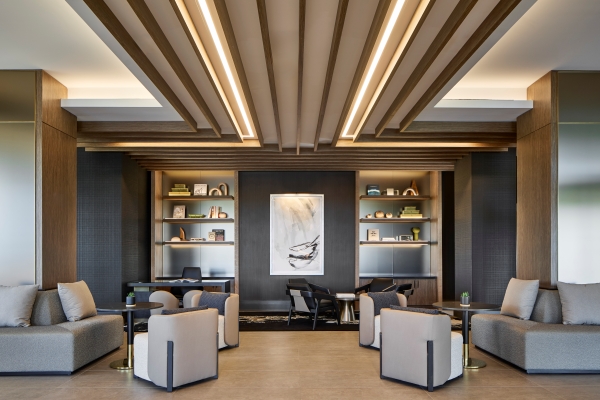
A NEW CHAPTER
Like the relentless cargo ships in Savannah’s harbor across the street, the AC Hotel Savannah Historic District proves modernity can thrive in the old city.
But the past will always have its place, and reflecting its unique partnership with the community, some of the hotel’s features are meant for the public. Inspired by the ‘Piazzetta’ or diminutive courtyards of Venice—as well as the historic plazas Savannah is known for—Shay found opportunities to create intimate found moments around the property.
One is an impressive new staircase and public elevator connecting Bay Street on the high bluff and River Street 20 feet below it. Replacing a rickety old relic with handsome granite steps and ornamental ironwork, its roots are obvious, without being overbearing—just the way Savannah likes it.
“This is telling that story in a way you recognize where it came from,” said Shay. “There’s a saying, ‘Now you know the rest of the story.’ In Savannah, we love the rest of the story, and this building has plenty of them.”
This story was contributed by Derek Herscovici.
